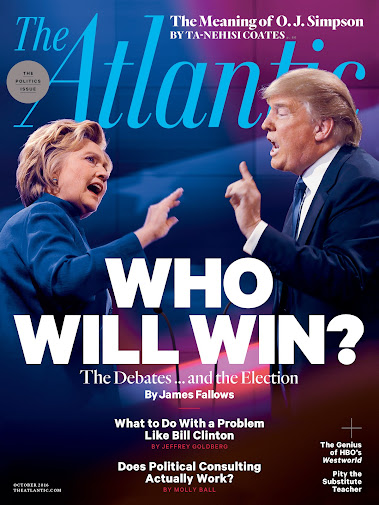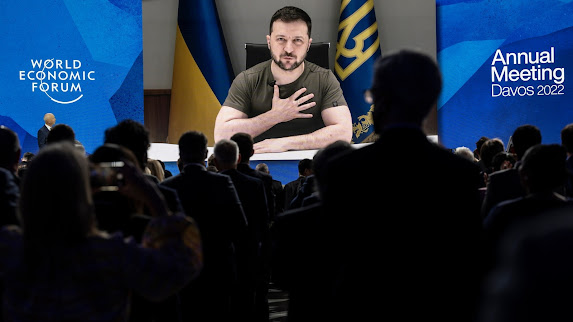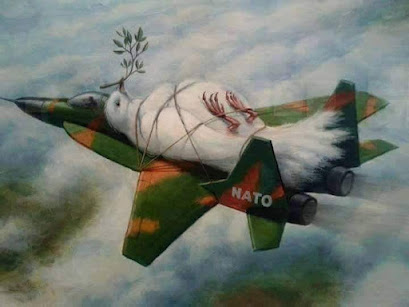The Importance of Addressing the Militarization of Space, Submarines, and Threat of Biological Weapons
By Ariel Ky
According to Vladimir Kozin’s report # 72 of 5/29/2022, A TRIPLE JUBILEE: WHY TO REMEMBER?, in the current situation the United States has made it difficult for Russia to negotiate agreements on arms control. He mentions the START-III Treaty, which is still in effect until 2026. It provides for keeping in balance the strategic nuclear missiles of each party to 1,550 strategic nuclear warheads and 800 deployed and non-deployed ICBMs and SLBMs, as well as their heavy strategic bombers.
Kozin summarizes the Agreement on “prevention of incidents on and over high seas prohibited dangerous rapprochement of naval and air vessels of the USSR and the USA while moving in the World Oceans or in the international airspace. Thus, it legally enshrined the then mutual interest of Moscow and Washington to ensure the safety of naval and air vessels in international waters beyond the outer limits of the parties' territorial waters or in the airspace above them.”
He adds that it’s unfortunate that the United States has been unwilling to discuss an agreement on the operation of submarines under the seas, as there have been a number of collisions between Russian and U.S. submarines.
Kozin decries the fact that the Pentagon is nevertheless developing the American global "antimissile shield" by increasing the total stock of interceptor missiles, mainly sea-based, and by improving their guidance accuracy, increasing flight speed and fitting them with individual guided reentry vehicles.
However, he considers that “Russia now has effective means to overcome the global U.S. missile defense system from practically any direction. These capabilities will level out the U.S. ballistic and cruise missile interception infrastructure, despite the enormous sums of money that the USA has allocated to creating a multi-layered ground, sea and space-based missile defense system.”
In a nutshell, Kozin sums up Russia’s dilemma when it comes to negotiating arms control with the United States:
“In the current situation Russia has to be very cautious about addressing the multifaceted problem of arms control, given that Washington is ready, as it has demonstrated more than once, at any time to withdraw from any agreement that it does not like for whatever reason.” He refers in particular to the ABM Treaty, which was “unilaterally and initially denounced by the American side in 2002.” The Russians considered the ABM Treaty as the cornerstone of arms control agreements.
To put it bluntly, how does Russia know if the United States will honor any agreements?
Kozin addresses the shifting geopolitics that Russia must navigate with the war in Ukraine. “Unfortunately, today, when the U.S. ruling circles have set their sights on the destruction of Russia, and statements about the admissibility of nuclear war are appearing in Washington, there is no point in even talking about any new agreement in the arms control system.”
Kozin warns about the arms race happening in the world today. “Many countries have begun developing the latest types of weapons, including those in the "conventional" category, which are capable of delivering warheads to targets at hypersonic speeds while traveling at low altitudes, making them difficult to detect.” This is leading to the militarization of space.
He also mentions the threat of the creation and proliferation of biological weapons, which is growing. In his opinion, an extremely dangerous scenario is developing, fraught with the most unpredictable consequences for humanity.
Kozin then zeroes in on the war in Ukraine. “Earlier this year, the authorities in Kiev, who started talking about nuclear weapons, their drive to the accession to NATO, and their readiness to regain Crimea by military means, added fuel to the fire. The Ukrainian conflict needs to be resolved, based on the complete denazification and demilitarization of this country.”
He insists that the West should stop all military assistance to the Kiev regime and force it to sit down at the negotiating table, and that NATO countries should constructively consider last December's proposals from Moscow on mutual security guarantees.
“Only then will Moscow be able to talk about restoring trust and normalizing the situation, which will allow us to begin the process of negotiating further arms control, a crucial factor in strengthening international security and strategic stability.
Any practical success along this bumpy road, without exaggeration, will bring the well-being and survival of the entire humanity. For the benefits of all.”
To read the report referred to go here
~ Ariel Ky is an American activist living in Mexico





















